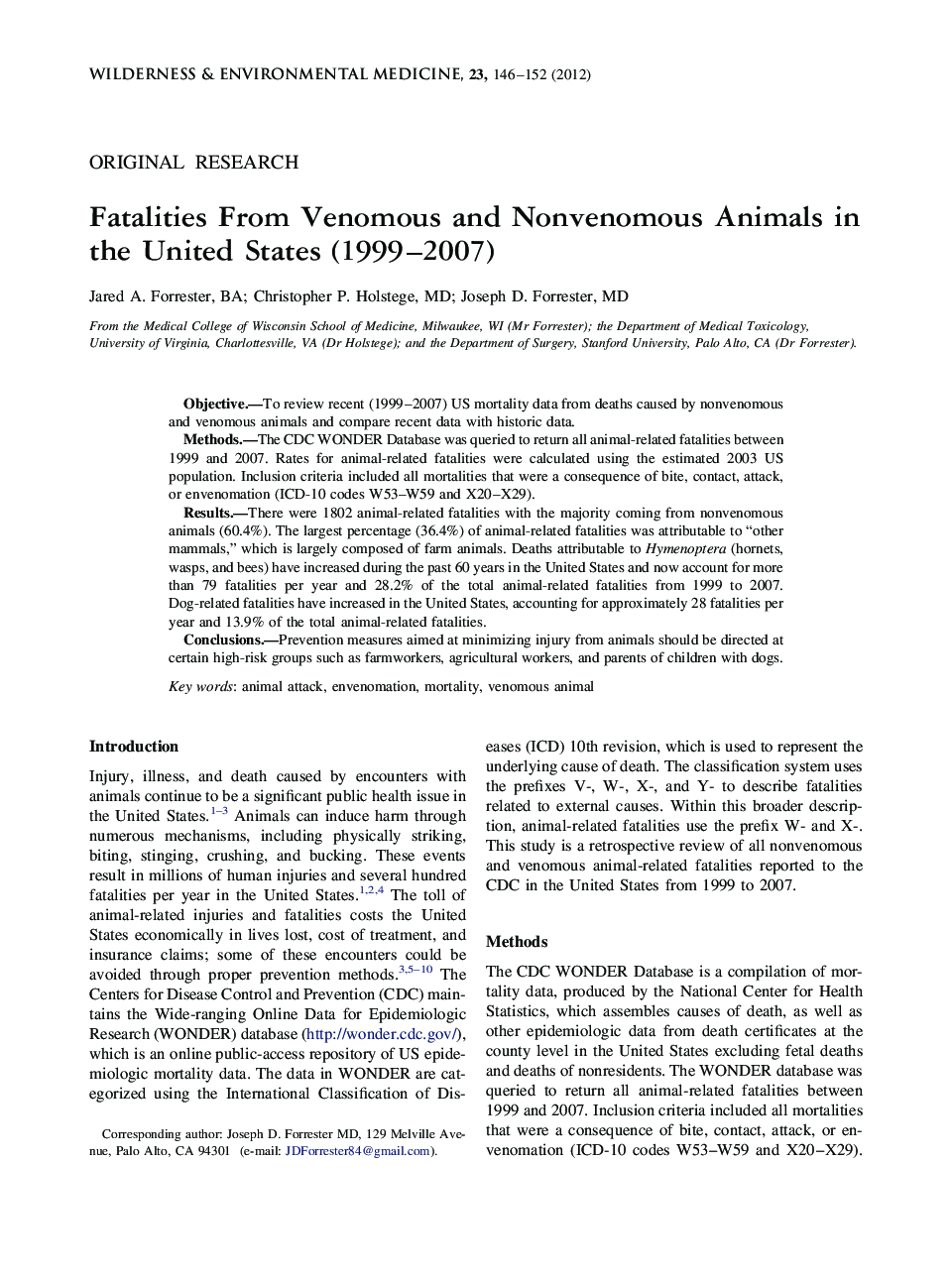| Article ID | Journal | Published Year | Pages | File Type |
|---|---|---|---|---|
| 2614327 | Wilderness & Environmental Medicine | 2012 | 7 Pages |
ObjectiveTo review recent (1999–2007) US mortality data from deaths caused by nonvenomous and venomous animals and compare recent data with historic data.MethodsThe CDC WONDER Database was queried to return all animal-related fatalities between 1999 and 2007. Rates for animal-related fatalities were calculated using the estimated 2003 US population. Inclusion criteria included all mortalities that were a consequence of bite, contact, attack, or envenomation (ICD-10 codes W53–W59 and X20–X29).ResultsThere were 1802 animal-related fatalities with the majority coming from nonvenomous animals (60.4%). The largest percentage (36.4%) of animal-related fatalities was attributable to “other mammals,” which is largely composed of farm animals. Deaths attributable to Hymenoptera (hornets, wasps, and bees) have increased during the past 60 years in the United States and now account for more than 79 fatalities per year and 28.2% of the total animal-related fatalities from 1999 to 2007. Dog-related fatalities have increased in the United States, accounting for approximately 28 fatalities per year and 13.9% of the total animal-related fatalities.ConclusionsPrevention measures aimed at minimizing injury from animals should be directed at certain high-risk groups such as farmworkers, agricultural workers, and parents of children with dogs.
